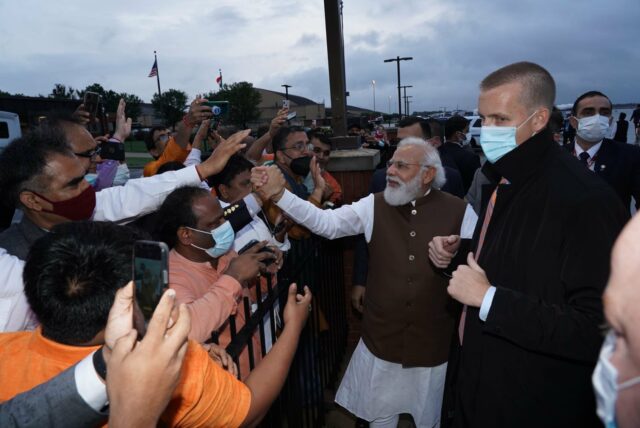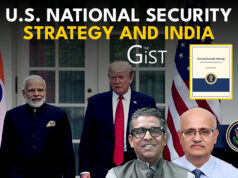NEW DELHI: “Now is the time for Prime Minister Modi to test the U.S., ask for things we would not normally have and see the response.” That’s from a former ambassador to the U.S. on the Modi-Biden summit on Saturday, their first since the latter moved into the White House in January. Much has changed in the last week that may warrant India pushing the U.S. envelope: the creation of AUKUS with the specific goal of countering China by investing Australia with nuclear powered submarines.
U.S. nuclear-powered submarines are widely acknowledged to be of a level of technology perhaps unsurpassed by any other (with the possible exception of the Russians). So the view in some quarters in Delhi about pushing for the lease of an American nuclear submarine in the manner we’ve done with the Russians (no irony intended). The answer may well be a polite no but it could open the doors to a dialogue on cooperation in developing such submarines given that is what Australia has been promised.
The White House statement of September 15 says: “The first major initiative of AUKUS will be to deliver a nuclear powered submarine fleet for Australia. This will include an intense examination of what we need to do to exercise our nuclear stewardship responsibilities in Australia. We intend to build these submarines in Adelaide, in close cooperation with the UK and the US.”
The U.S. does not say it will transfer or lease its nuclear subs to Australia. The plan is to build them there, something India has been doing (with some Russian help) for the last many decades. That programme has delivered two submarines with indigenous nuclear reactors and there will be more going forward. The pace has been slow and given the rapid expansion of the Chinese navy, there’s a need to speed things up.
But even if the U.S. agrees, there could be conditions: what are they getting in return? Would India be comfortable with offering Uncle Sam bases? India would also have to factor in blowback from the Russians who may create issues that could delay the lease of a third Akula class nuclear attack sub. A potential minefield there.
Modi’s more immediate focus would be Afghanistan and how the two countries could work together there and in fighting terrorism. Biden’s views on Iran and the future direction of sanctions is one area Modi will want to explore given the anxieties over Afghanistan. Also, with the delivery of the Russian S-400 missile defence system this year, will Delhi get a waiver from U.S. sanctions?
U.S. officials have spoken of working together to uphold a free and open Indo-Pacific, taking steps to contribute to a global solution to the Covid-19 pandemic and taking concerted action to address the climate crisis. This bilateral discussion will flow into the Quad discussions that are also expected to cover semiconductor chips. Currently these are in short supply and concentrated in East Asia (South Korea, Taiwan and China).
The Quad is working on a plan to reduce this concentration with India seen as having an advantage in terms of “trained human capital”. A report by the Japanese daily Nikkei also noted that India’s electronics industry can emerge as a semiconductor centre with the focus on upstream operations, assembly, testing and packaging.
For a first summit, both in terms of the India-U.S. bilateral and the Quad, there’s considerable ground to cover. Much of the work would have already been done. It’s the level of political understanding and comfort that will signal the way forward.
Thirty eight years in journalism, widely travelled, history buff with a preference for Old Monk Rum. Current interest/focus spans China, Technology and Trade. Recent reads: Steven Colls Directorate S and Alexander Frater's Chasing the Monsoon. Netflix/Prime video junkie. Loves animal videos on Facebook. Reluctant tweeter.





